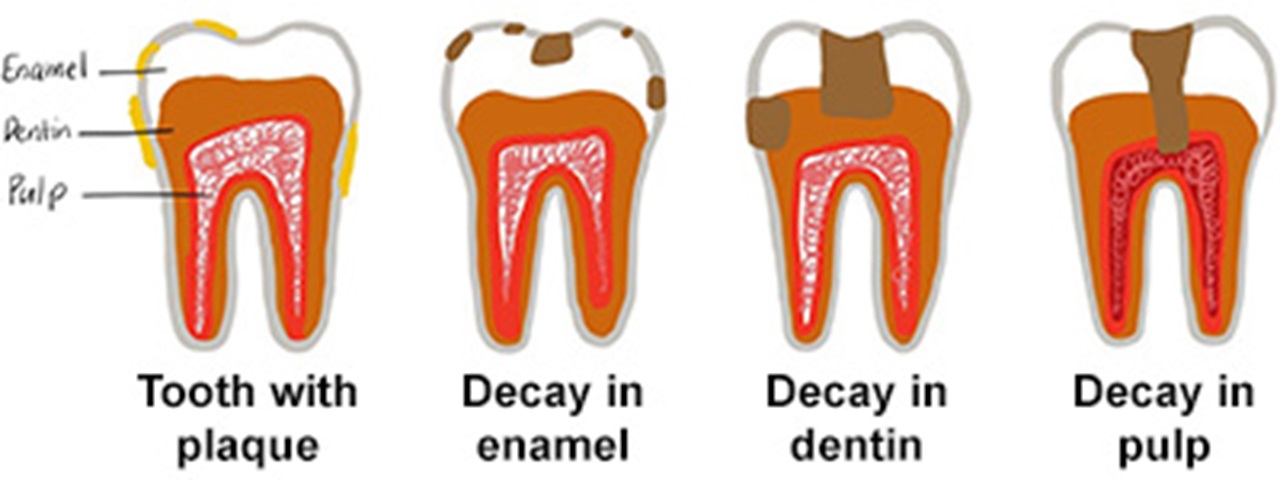A.T. Still University - Missouri School of Dentistry and Oral Health
Did you know tooth enamel is the hardest substance in the human body? Enamel is the protective outer layer of our teeth. Bacteria in our mouths use the sugar we eat to make acids which can wear away this protective layer, forming a cavity. Once enamel is gone, it does not grow back. This is why your dentist and dental hygienist are always telling you to brush with fluoride toothpaste and clean between your teeth! You can learn more about cavities and how to prevent them below.
What Is a Cavity?
A cavity is a hole in your tooth. A cavity in an early stage can look like a white spot, which can be healed. Over time, it will look like a brown or black spot. Cavities can be tiny or big. Cavities can form in many places, but they often form on the tops of your teeth where you bite and in between your teeth where food gets stuck. Cavities that are not fixed can cause sensitivity, pain, infections, and can even cause you to lose your teeth. The best way to keep your teeth and keep them healthy is to prevent cavities.
What Causes Cavities?
Do your teeth ever feel “fuzzy” after a meal? Do you notice when you brush and floss this fuzzy feeling goes away? When we don’t brush and floss the bacteria and foods we eat build up and form a sticky substance called plaque (plak).
Throughout the day, bacteria feed off the foods we eat. When we eat or drink sugar, the bacteria in our mouths use it to live and make acid. This acid stays on our teeth and attacks the outer surface of our teeth. Over time, the acid wears down our teeth, causing a cavity.
To understand how a cavity forms, let’s look at what makes up a tooth. Enamel is the outside hard covering that protects our teeth. Below the enamel is the dentin. Dentin is not as hard as enamel. This makes it easier for cavities to spread and get bigger. Below the dentin is the pulp. The pulp is where the nerves and blood supply for the tooth live.
